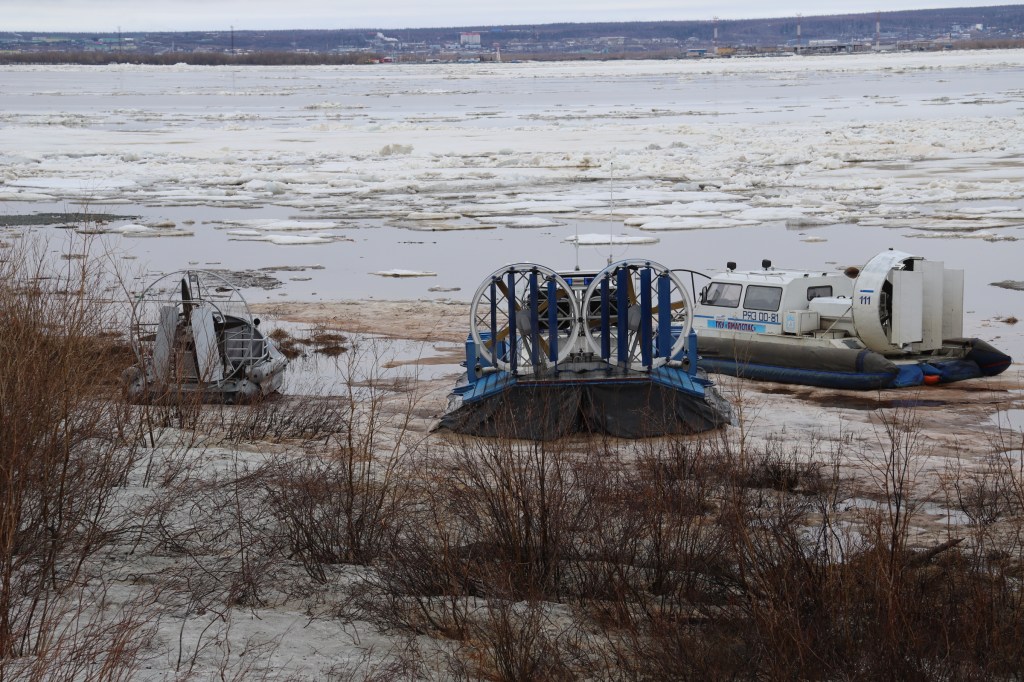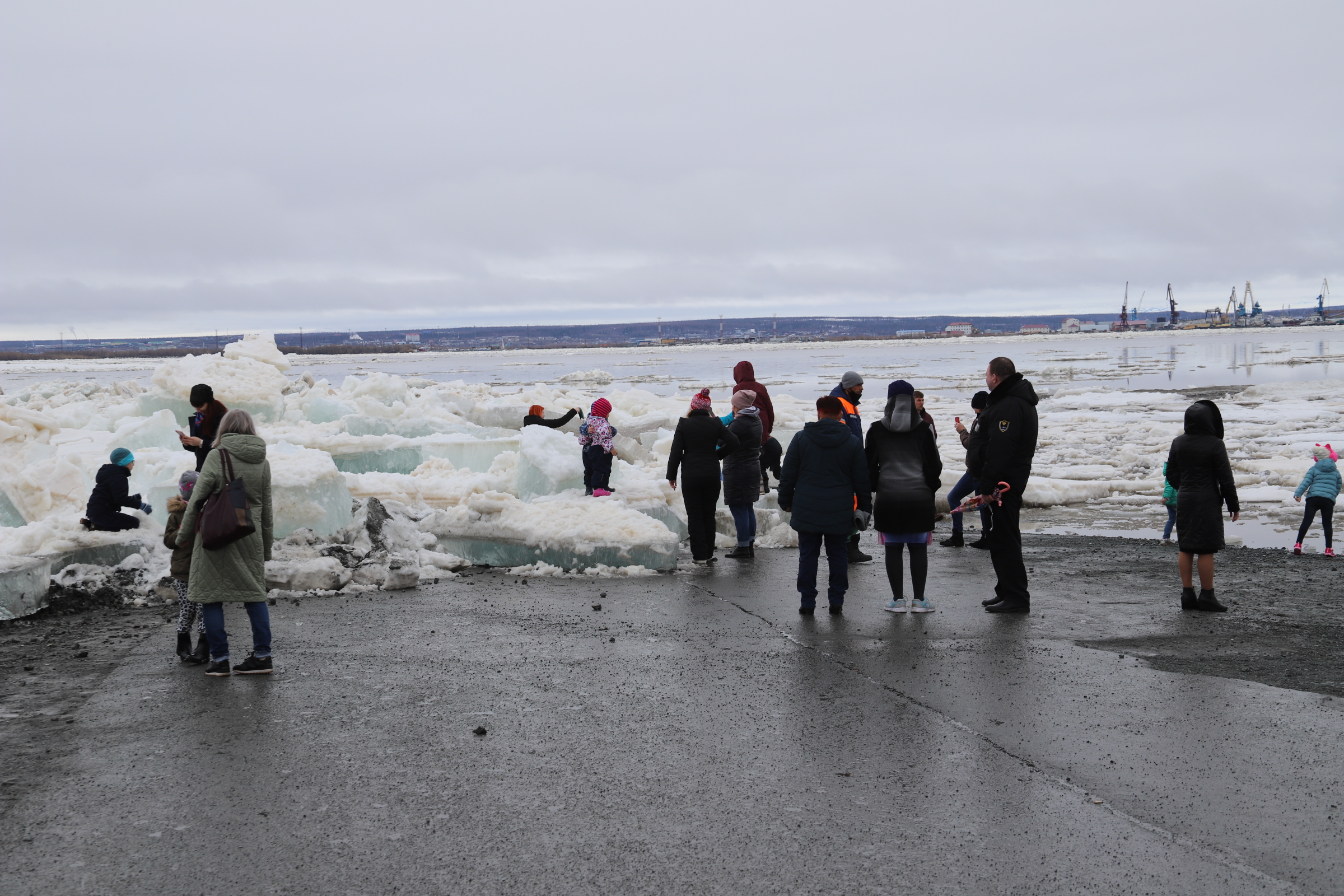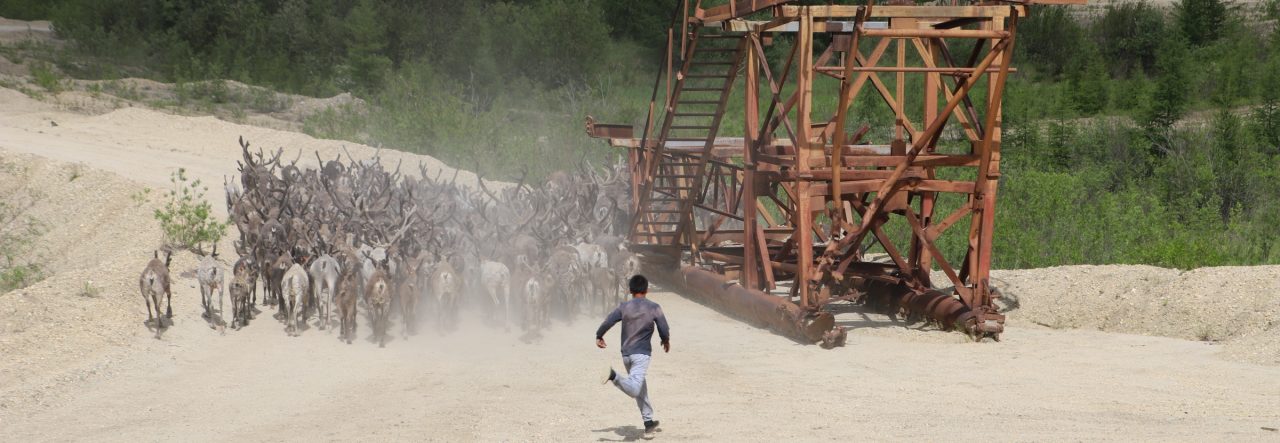The warm weather in Siberia seems to have led to an exceptionally early ice-thawing on Siberia’s major rivers. The specific of the river geography here is that all the major rivers flow from south to north, into the Arctic Ocean. This means the ice melts in the south first, and then the water pushes into the existing ice downstream northwards, leading to ice-jams. Sometimes this is visually quite impressive. This year this happens earlier than usual all over the Russian Arctic, read the following info west to east:

Europe’s big Russian Northern River to the Arctic Ocean, Pechora has today thawed all the way up to the Delta north of Naryan Mar, which is considered 10 days earlier than usual based on previous observations.
In Salekhard where I’m now the ice on the River Ob’ started moving already on 12 May, which is according to local news almost three weeks earlier than usual. By the way, even at times of COVID 19 and incessant reminders to stay at home, this is an event that still some people can’t miss. For the city-dwellers in Salekhard, it is the main signal for the start of the long-awaited warm season. It’s also the time when finally one can cross the river again by boat, and go by car over the neighbouring city of Labytnangi, where the trainline to Moscow ends, and thus all the cargo for West Yamal arrives. During the thin-ice time, one can cross the river only with Hovercraft (that’s a really cool vehicle by the way).


In Siberia, east of the Ob’, the next big River is the Yenisey. In Dudinka, the capital of Russia’s most northern Arctic region Taimyr, the ice on the Yenisey started moving on the 16 May. In 1936 it was an entire month later. And last year on 16 May the Yenisey was still frozen even 1110 km south of Dudinka, as the local news stated.
Even further East, the third major Siberian River is the Lena. There in Yakutsk the ice started moving this year the 11th May, which is also some days earlier than usual, even though not that dramatic. But still, in 2010 they considered that the start of the ice move on 20th May is “some days earlier than usual”. Now the 11th May is considered normal.
Probably this is connected to the unusually warm weather upstream in Siberia where these big Rivers take their start. For example, in Novosibirsk where the Ob comes from it was already over 20 degrees Celsius at the end of April. Most importantly, the winter itself has also not been very cold all over, even in Norilsk it got hardly down under minus 40 Celsius, which they think is very unusual. Probably this has led to the ice being thinner than usual all winter long, and as a result also melting earlier.
The result of this is besides global warming very concrete: these Arctic Rivers are crucial in winter as ice-roads, and the thinner their ice is, and the earlier they break up, the less cargo you can bring on these ice-roads to all the settlements along. In the main reindeer herding headquarters of Yamal, Yar-Sale, the winter road was closed for cargo trucks officially all year. This was unheard of. No big trucks allowed there, like the one that pulled us out once when we were stuck for a night in a snow storm back in 2012 (see pic).

Such conditions mean that you have much higher prices for food in such places, and shortages of some stuff. For example petrol was not delivered by winter road to Yar Sale in 2020, so its price went up in the village so much that even some reindeer herders started bringing tons of petrol by snowmobile from the gas town of Nadym, almost 200 km south of Yar Sale, and re-sell the petrol and still make some profit:) . More importantly, for the herders in Yamal this also means they have to be crossing the Yuribei River in the middle of the Peninsula early enough over the ice, because once it melts, it will be too big for the herds to cross on water.
So a difference in the ice-melting times has big influences on Arctic mobility. This year on top of all this comes the Corona crisis, and maybe at least there we can find a good consequence of this early thaw: the less mobile people are, the less likely it is that the virus spreads to remote Siberian villages and the tundra. For example, on the Yenisey they are thinking already to not open passenger traffic to Dudinka whatsoever. That’s much easier with the river open: just don’t let any Ferrys go, and nobody can cross the river with a car…

Pingback: Summer 2020: When the unprecedented becomes the precedent – The Ice Blog
Pingback: Blog – Summer 2020: When the unprecedented becomes the precedent – Eye on the Arctic
Pingback: Gastartikel: Sommer 2020, als das Abnormale zur Normalität wurde | Polarjournal
Pingback: Scientists Alarmed About Siberia’s Record Breaking Winter and Spring Temperatures - Anufriev
Pingback: Scientists Alarmed About Siberia's Record Breaking Winter and Spring Temperatures | Usa online news
Pingback: World – TIME: Scientists Alarmed About Siberia's Record Breaking Winter and Spring Temperatures | Freedom FM Radio Network
Pingback: ‘An Alarming Sign.’ Scientists Are Worried About An ‘Unusually Mild Winter and Spring in Siberia.’ | Daily insights
Pingback: Scientists Are Worried About Siberia's Warm Weather | Time
Pingback: Scientists Alarmed About Siberia’s Record Breaking Winter and Spring Temperatures - Latest World News Line
Pingback: Scientists Alarmed About Siberia’s Report Breaking Winter and Spring Temperatures - Bharat Samachar Hub
Pingback: Natural disasters and the WORLD,Space,Science,History,Travel- RadioMetafora.ro